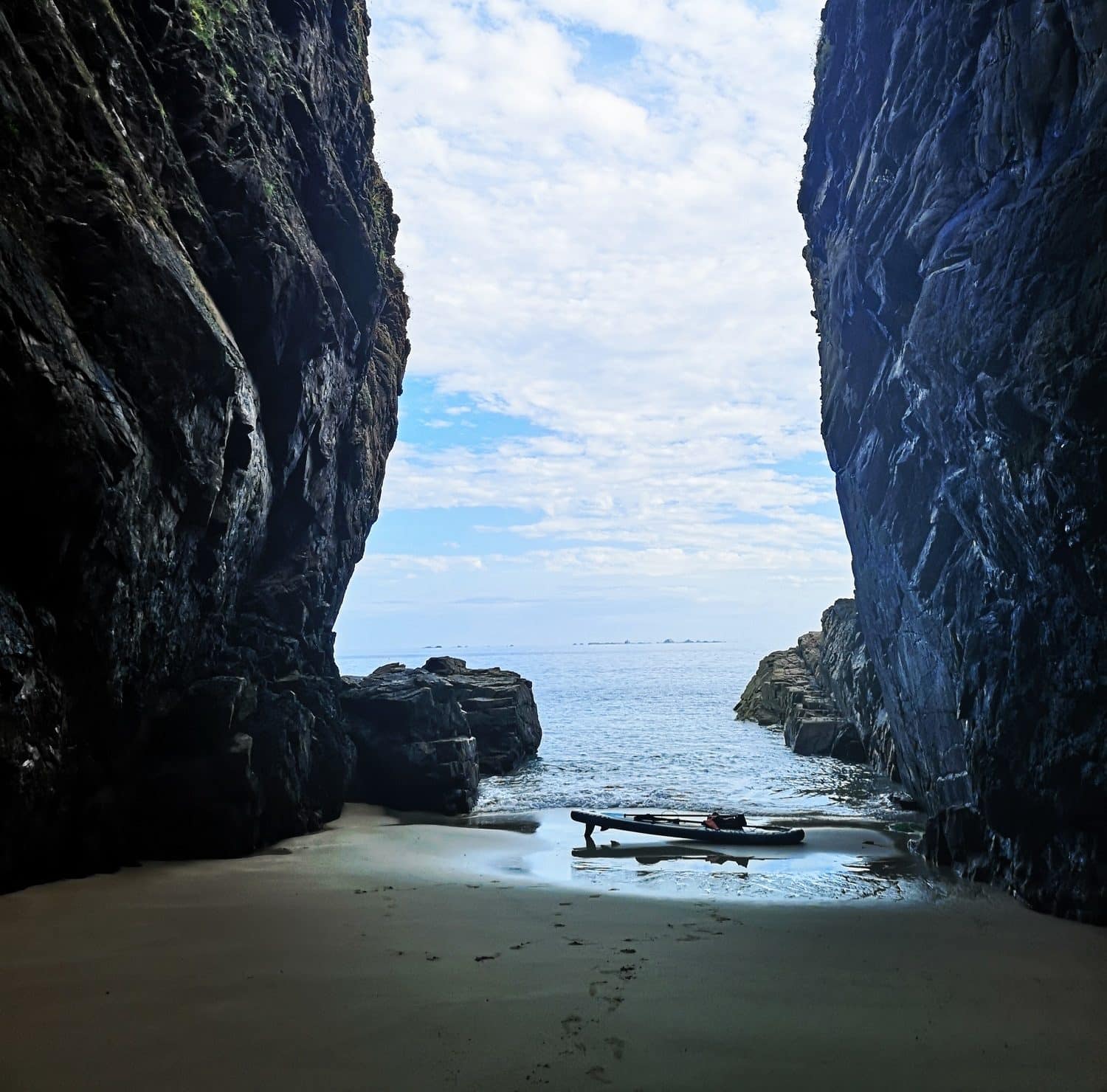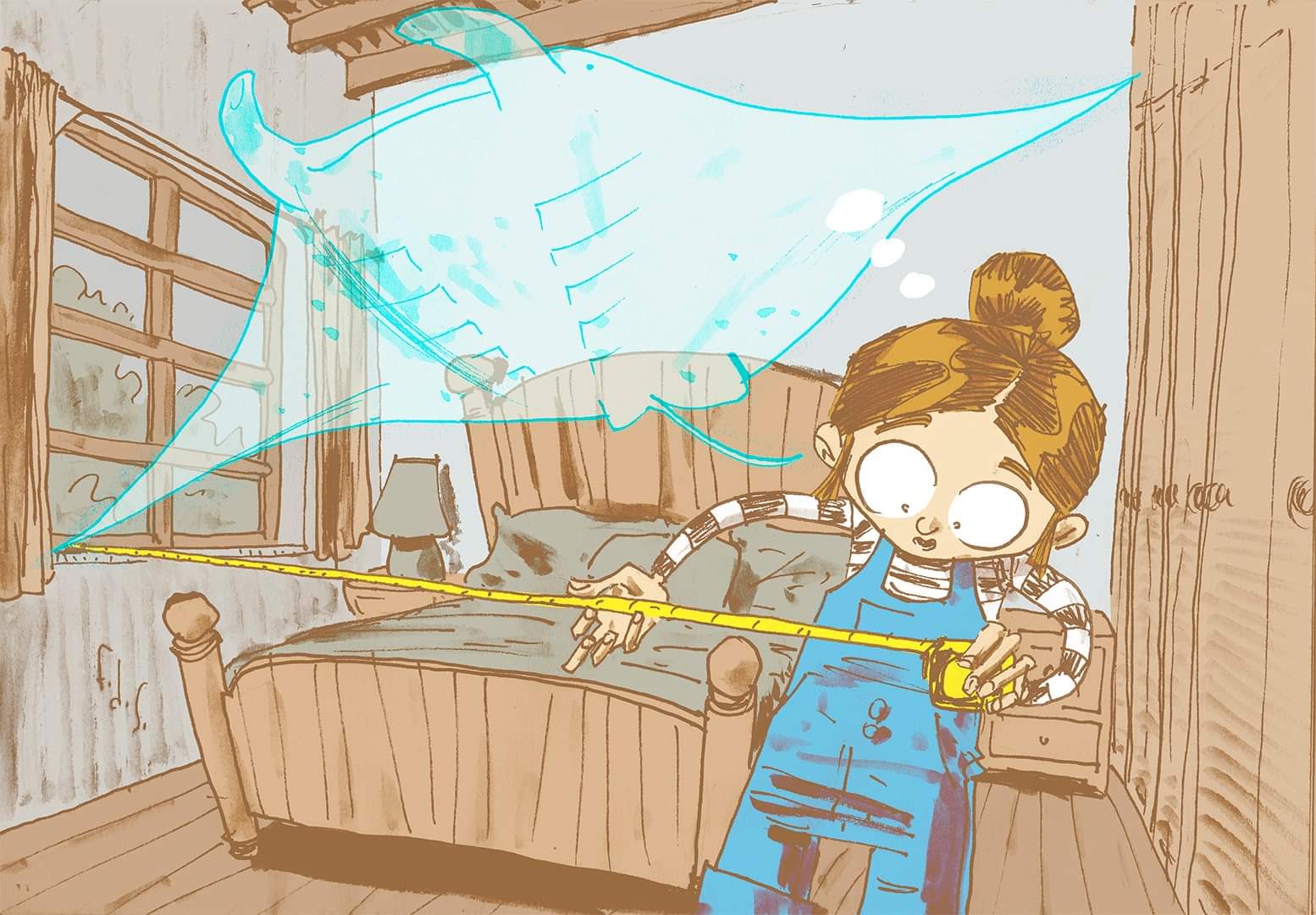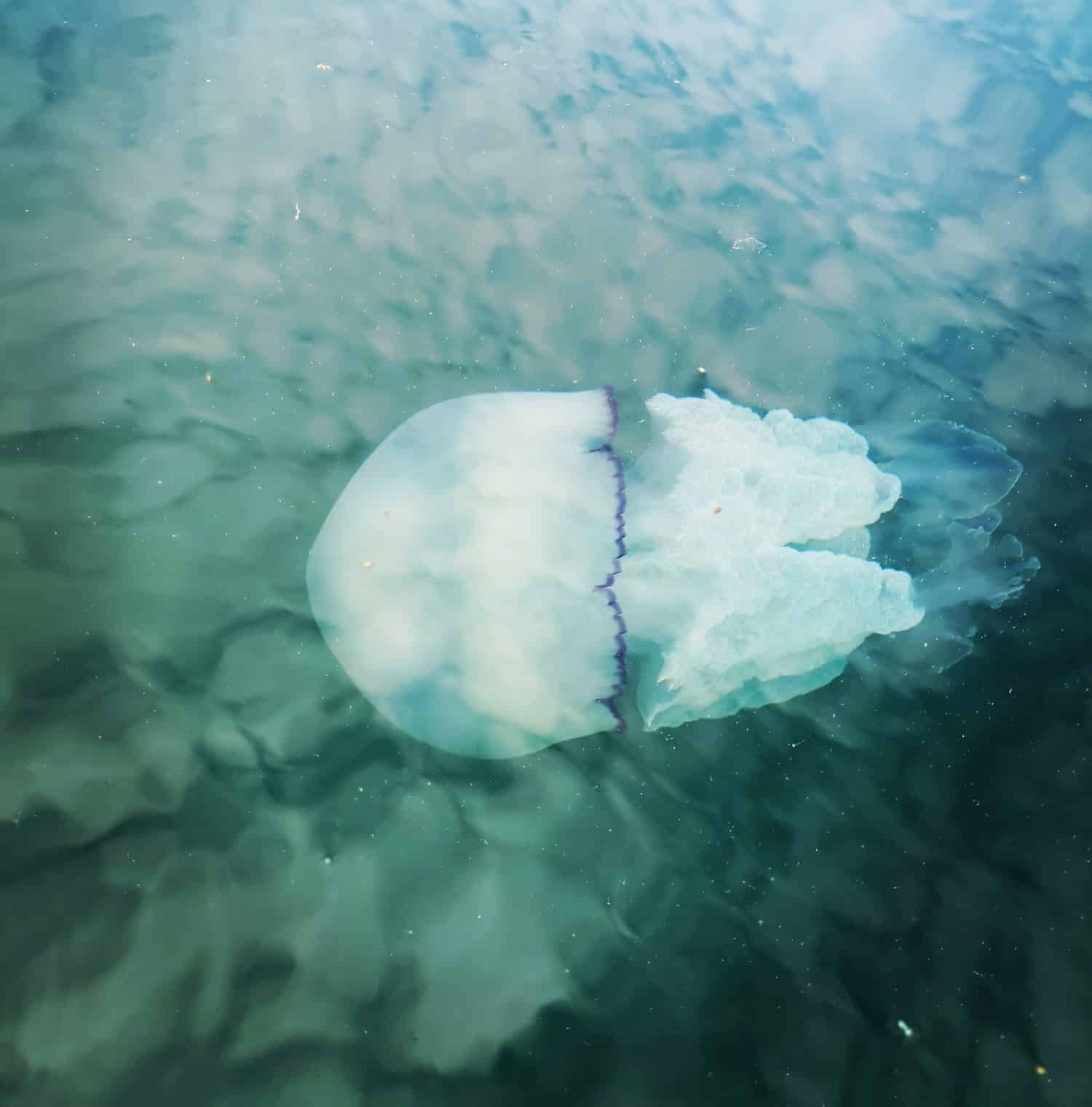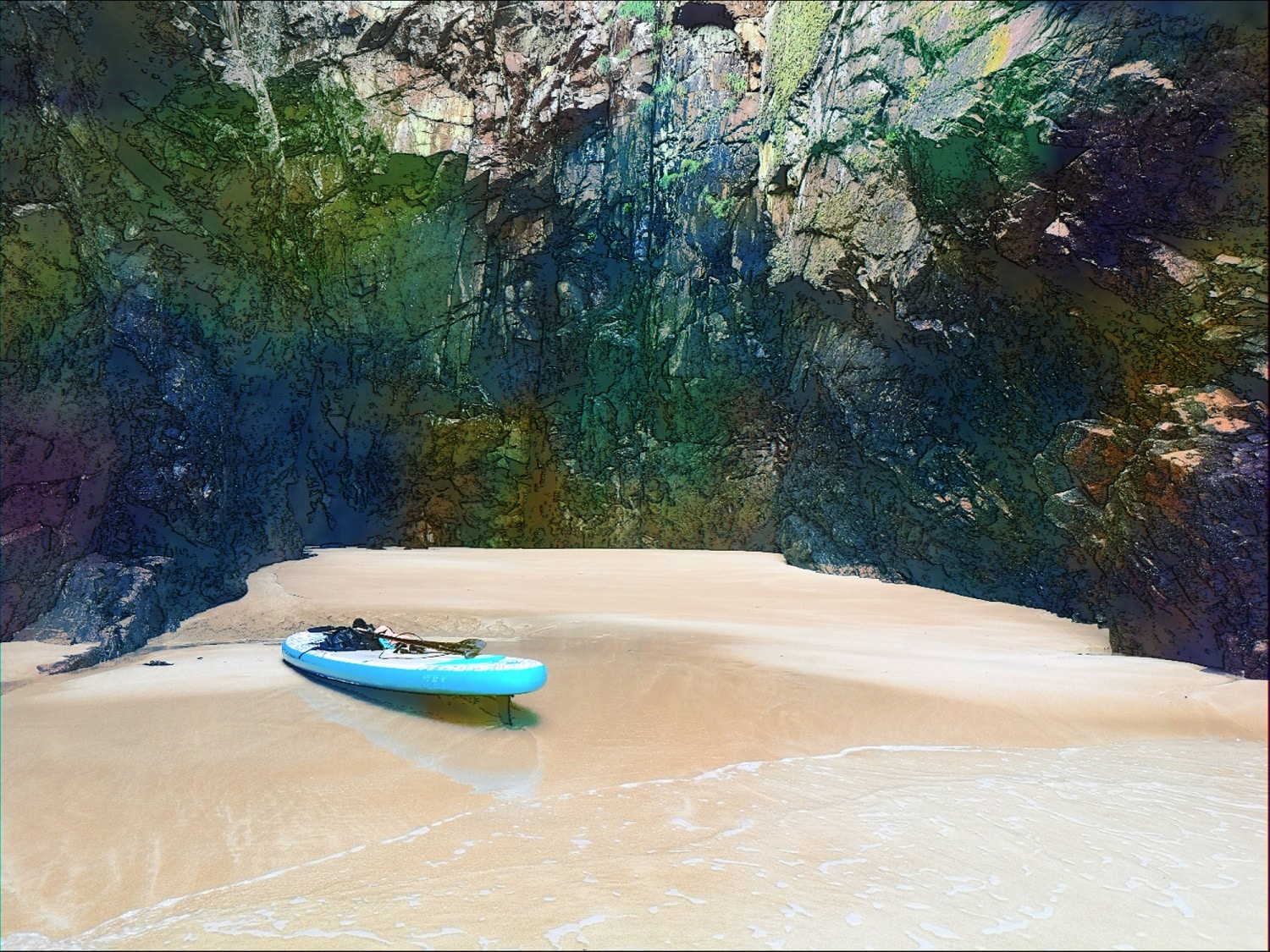Have you ever stood still and wondered what it is that creates hope within us?
I am writing this, sitting on my stand-up paddleboard, bobbing along in the waters of Jersey in the Channel Islands. The sheer beauty surrounding me is stunning. The sun has just risen, the majestic, uniquely shaped cliffs around me are dressed in warm hues of yellow and gold. I can see the bottom through the crystal-clear turquoise waters that are bordering the sweeping lush green of the coast. Even after all these years, it is mesmerizing to think that in a few hours’ time I could be walking on what currently is the seafloor.
Oystercatchers are laughing ever so frantically, and I have to think of the precious puffins I recently saw. The island’s beauty can be downright overwhelming. Being out here sends a tingle through my body and I feel a sense of gratitude and peace.
This love, this compassion, this awe; it has always been with me.

No better place to gather my thoughts. Credit: Katrin Schiffer
Growing up landlocked, I remember measuring my parents’ bedroom to excitedly tell them a manta ray would just about fit in – diagonally that is. The width of a humpback whale’s fluke, however, was much greater than that of our home. I remember crying over the cruelties committed against animals at a young age.

Francisco Dueñas Serrano kindly captured Katrin’s early fascination with manta rays.
The accumulation and essence of everything I have told you so far have been a major driver for many decisions in my life. Not least of all:, to graduate in marine conservation management. And now let me tell you what brought me to this island.
One conscious decision to leave conservation behind for a while, followed by a series of random events.
At times I wondered what hope there was in it all. Was I willing to commit myself to a cause that could seem so bleak? I wasn’t sure how to invest myself, where to invest. What suited me as a person, and what was ‘worthwhile’?
Four years later, I am sitting here and want to talk hope with you.
What’s instilling hope for me? The kestrel hovering above? The corals and fish below? The scrawny but adorable oystercatcher chick making me laugh? They are my inspiration, my fuel. Here I recharge my batteries – my mind, body, and soul. Is this hope though? Not necessarily.
Occasionally, it’ll make wistful even! On other days, it feels as though these encounters and these places; they are energizing me, almost beckoning me to help them out in ways they could not possibly help themselves.

An early morning discovery along Jersey’s North Coast. Credit: Katrin Schiffer
Ironically, I am sitting here hoping for dolphins, or a sunfish even. Oh, how I would love to see a sunfish! I am always hoping for them. There we have it. Hope. I have maximized my chances by choosing time and place, based on previous experiences – mine and that of others. No guarantees. And to tell you the truth – I am missing these buggers, as they have been elusive this year. With me at least. I keep going though, keep hoping. And when I do see them, I feel more encouragement the next time. There are fewer excuses next time around. It’s not too windy. It’s not too cold. You never know! When I do see them, I thank them and mutter under my breath for them to take care.
That’s the crux, it is out of my control for the most part. I can only hope for the best.
What if this was my relationship, I suddenly think. Would I want to invest so much of myself into something based on hope alone? Don’t we need a second, if not an alternative ingredient to go by? Hope to me almost equals the carrot on the stick. A promise good enough as long as it seems attainable.
I am the ‘cup is half full’ kind-of woman, but the sentence ‘there is always hope’ somewhat carries a sense of blindness. Isn’t hope rooted in despair almost? We need hope. In the darkness of life, it can be all we have. It is precious.
Do I want it to be my foundation though? No.
I’d rather operate from a point of – not even optimism – but trust that comes from within. Isn’t that a stronger root? Faith in our path. That thing can and will change.
Do we need to learn to cultivate a culture away from doom and gloom, and maybe hope even? Towards one focusing on energy, and on what fuels us and gives us confidence. To instill a sense that our path isn’t impossible. To shed light on the humans we are – especially if we want to inspire others to join in.
I am asking for vulnerability and courage to join a conversation showing that we in the ‘green world’, us tree-huggers, us scientists, us dreamers, us eco-warriors, us pointing the fingers – we are not as different and isolated from the ‘non-conservationists’ as one may think.
By honestly exploring the role of hope in our conservation lives we may be able to create a new sentiment.
In his foreword to Liz Cunningham’s ‘Ocean Country’, my favourite author Carl Safina wrote this: “ Doing things creates hope. You don’t wait for hope, you do things. Who has not felt, on our frightened necks, the heat of that dragon who breathes, “Don’t bother.”. Who has not wondered, “Why care?”. I know I have. Why is that dragon sometimes so strong? Because we feed it. Because it takes courage to admit that not all is lost. It takes courage because “Why bother” is the easy conclusion. Doing nothing is also the answer that brings zero satisfaction to the human spirit. And so the quest. […] The philosopher Joanna Marcy reaffirms, “Hope is something we do.” […]. Hope is the ability to see how things can get better. The vision of what “better” would look like inspires all good work. ”
His journey – the part he has allowed us to follow through his books – it has been part of my own. It is his foreword that was a big contributor to me starting this journey about the question of hope.
I whole-heartedly agree with him in that it takes courage to be an optimist. To brush ourselves off and continue on ahead. Next time you find yourself in love with nature, ask yourself this: What are the roots of your hope? Is it what drives your forward motion? Do you want it to be?
Then share.
You can read more of Katrin’s work at https://www.thequestionofhope.com/


